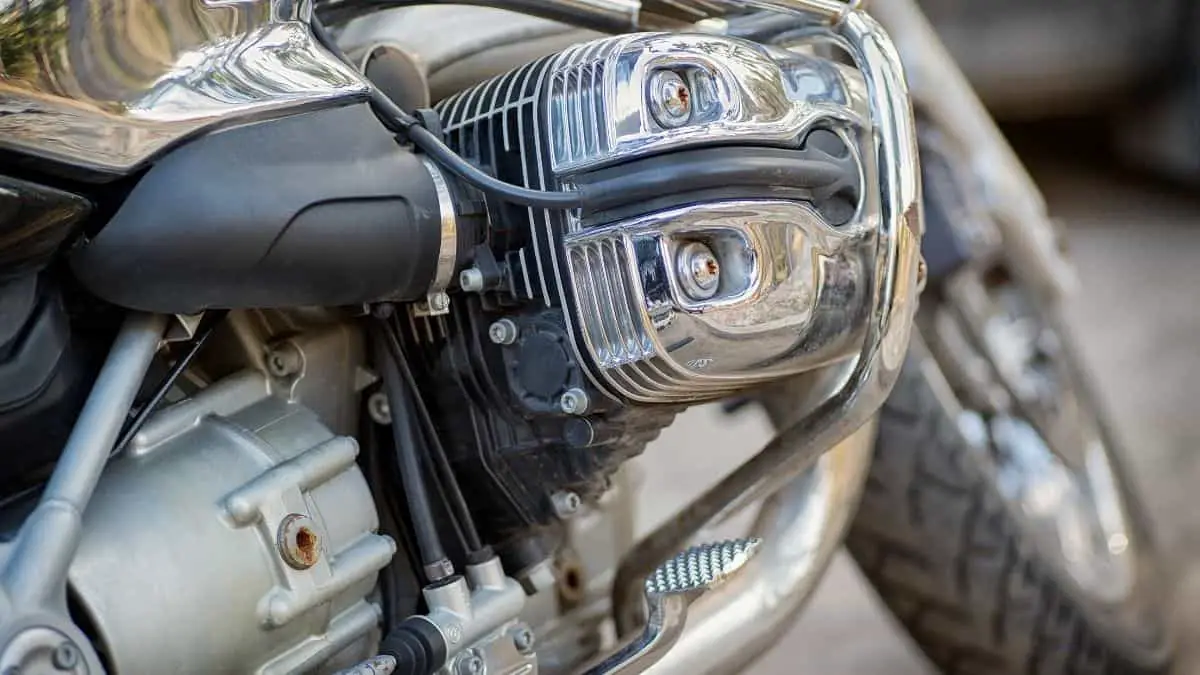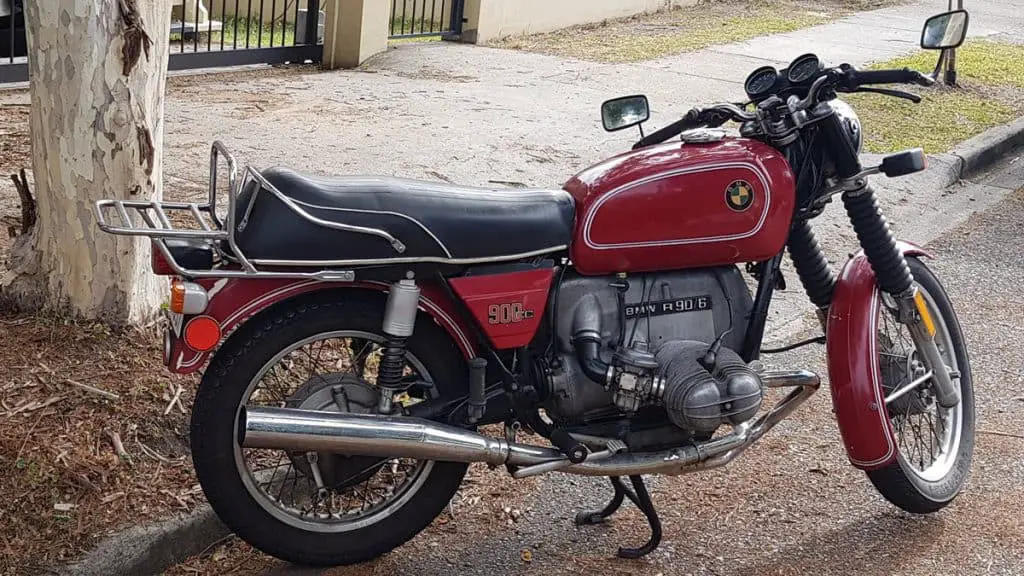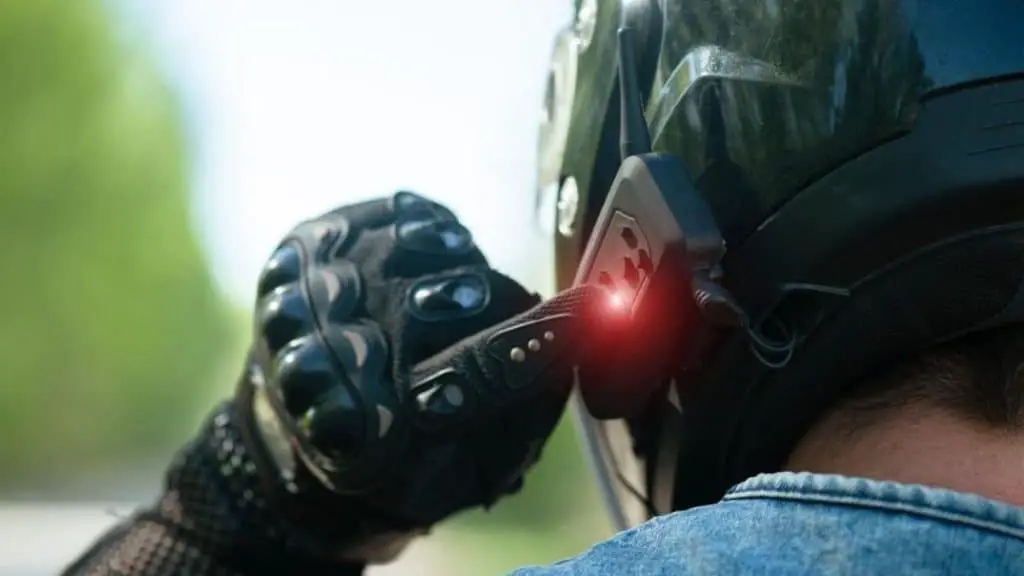What Does a Motorcycle Rectifier Do: Solving the Mystery of Motorcycle Electronics
Motorcycles have a rectifier, that is a regulator. A what?
What’s there to be regulated? I mean, it’s a motorcycle! You pour in the gas, twist the throttle and move from A to B.
HOW complicated can it be?!
You’d be surprised!
There’s more to it than rolling a lean-mean-two-wheeled machine. Yes, all motorcycles have batteries. Duhh… how else could you start your bike in the first place?
But batteries have a LIMITED energy from that sweet, juicy-flavoured-battery-filled-sulfuric acid.
Hmmm…
So, should there be some kind of a charging thingy? I mean, what’s saving your butt from running empty on battery muscle in the middle of nowhere?

That’s why motorcycles have a 3-phase AC alternator.
It’s a fancy tech term for something that’s producing electrical “vibe” every time your engine revs. It’s like having a mini thermal plant generator under your legs. It creates POWER!
But don’t worry about it for now. I’ll explain it later on.
“Power is nothing, without control”
Quoted by the all mighty brand Pirelli
But.. (There is always a but, isn’t it?)
What’s going to rectify and regulate all that electrical buzz on your motorcycle, so that it safely charges your battery?
Introducing… (**80s late-night-infomercial-music plays**)
Motorcycle rectifier/regulator a.k.a Moto rec-reg. It rectifies or regulates all the electrical AC spikes from your alternator.
Worried about frying your elec. installation?
Get yourself a quality regulating unit!
Worried about overheating your Alternator?
Get yourself a quality reg-rec!
Worried about poor battery charge?
Get yourself a quality RR unit and a NEW battery!
If you call +1 – MOTO-REC-REG, I’ll sweeten the pot and add one new extra unit! You never know when that electrical thingy might die on you.
(**End of infomercial**)
Motorcycle Rectifier — Mysterious Engineering or Simple Electronics?
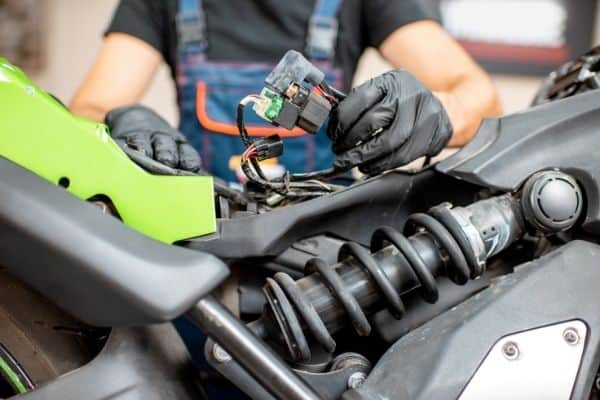
Remember the 3-phase AC alternator?
Well…
Why is it an AC (alternating current) in the first place? Why not DC (direct current) instead?
If it were DC, there wouldn’t be a need for a motorcycle rec- reg unit? Right?
Hear this: Before ‘60s and before blinkers were even added onto a bike, the alternators were DC! Holy Mother of … that’s a long time ago!
But they were clunky, big pieces of metal that are now outdated. Irrelevant.
Imagine having a big, oval-shaped generator right next to your left leg. Plus, on a DC alternator, you would need to change brushes more frequently than oil.
That’s why we have AC alternators. Smaller compact, electricity-generating units.
But AC is inherently bad for a battery. It literally boils it and the battery makes all kinds of gas hissing noises. (**Fume hisses in the background**)
Clever engineers then came to an idea — Why not put a couple of rectifying diodes, a couple of MOSFETS, a little bit of wires, and a big aluminium heat sink into a mix?
And BOOM – the Rec-Reg unit is born.
Rectifying part converts the AC into a DC. It’s like running on an “opposite day”. You have one type of signal on the input and a completely opposite one on the output.
Regulating part fine tunes that DC output. It can vary from 12 to 50 V, so it’s still dangerous for the battery.
That’s when MOSFETS come into play. They control that “unstable” voltage into a more stable range of 12 to 14.5V.
It’s like Stradivari fine tuning his violines. When you hit that range, you know it has reached perfection.
EDIT: I don’t know why I put the Stradivari analogy in the part about rec-regs. But.. Hey, at least you get the picture, right?
Know this. Rec-reg unit does NOT only charge your battery. It also powers up your dashboard, fuel gauges and other DC powered devices.
Without that little aluminium-squarish-box most your motorcycle parts won’t even work. Hell, your whole motorcycle would NOT start.
Talk about independence!
Motorcycle Rec-Reg Unit — Different Types, Same Function
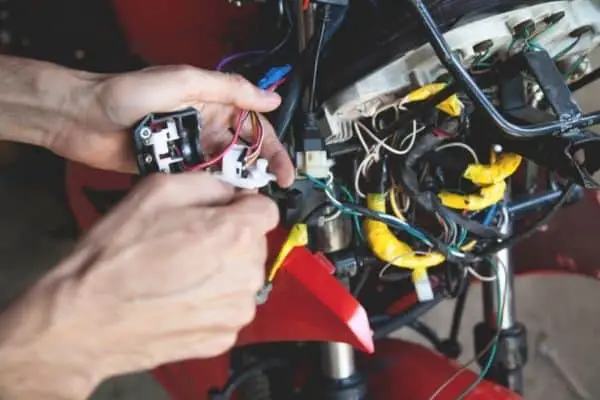
The world was set to be such a simple place. But those smart engineers had to be like: Why make it simple, when we can make it more COMPLICATED?
Because of that, we have different types of Rec-Reg units, with all kinds of different numbers of wires coming out of them.
Some have 2 wires, some have 6, some have God knows how many. But they all serve a FUNDAMENTAL purpose. Providing DC power to your bike!
Understanding all those wiring types can be super hard, but we are riders. Simplicity is our main driving force.
Here is a simplified layout of every wiring type of Rec-Reg unit. On the PLANET.
Every!
2 Killers of Motorcycle Rec-Reg Unit (That Will Kill It Dead)
Heat!
Heat is the ULTIMATE destruction for a RR Unit!
To prevent overcharging the battery, the regulating part of the unit dissipates that excessive charge as heat.
But it has a limit! The RR unit can absorb heat till a certain point. Pass that, and either diodes or MOSFETS get vaporized.
(**silent puff**)
The second killer is more ridiculous and stupid. You’ll think there is NO WAY it could damage the Rec-Reg unit.
Poor grounding!
I can’t stress enough how many problems having loosely connected wires caused me. It’s a DISASTROUS scenario when, in the middle of a ride, the engine just goes off.
And it’s all because of some poorly connected ground wire.
Loose or poor ground causes the Rec-Reg unit to overheat. And heat piles up and leads to?
A one-way ticket for your RR unit to the electronics graveyard!
How to Know if Regulator Rectifier is Bad (or Dead)?
Picture this.
You are riding down the canyon side and suddenly your dashboard starts to flicker. You hear a HISSING sound from your battery. Suddenly it causes fire!
Panik!
Your battery has been overheated by a DEAD Rec-Reg unit and now, you’re a rolling fireball.
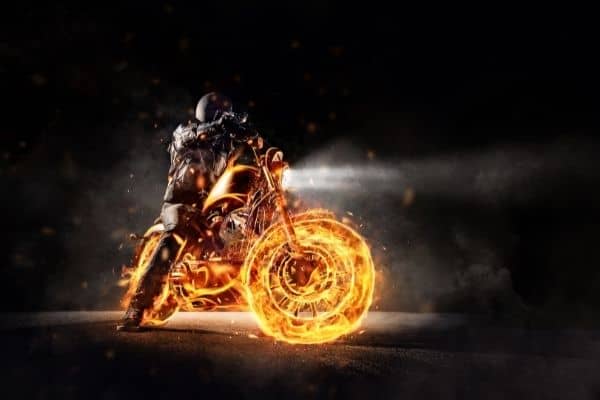
Or this.
One day you spot your motorcycle is starting poorly. Almost like it’s missing battery juice. But, maybe it’s nothing.
Second day – the problem starts to get noticed, but you start to suspect that something’s going on.
Third day – you need to push-start your bike. Lights are super-dimmed, almost like you don’t even have them.
Okay, panic slowly starts to creep in.
Fourth day – nothing. You push the start button, but the battery is already in the underworld.
Those two cases are tell-tale signs of a DEAD Rec-Reg unit!
How to prevent it?
Easily.
Get yourself a multimeter, a cup of coffee and 15 min of time. That’s all that’s needed to check if the RR unit is working properly.
Do it once a month and you’ll know you can sleep soundly at night.
Procedure?
Guys at Partzilla did a SUPERB job of explaining how to test a Rec-Reg unit. It’s plain and simple, just the way we knuckle-heads with helmets like.
Frequently Asked Questions on What Does a Motorcycle Rectifier Do
Can I ride my bike without a Rectifier?
Of course you can!
But eventually, your battery will die out and you’ll experience the 4 days of Rec-Rec Doom, mentioned above.
Will a faulty rectifier keep a motorcycle from starting?
No!
If you have enough battery juice to start the spark and crank the engine, then you’re good to go.
Gasoline engines can run an awful long time on just the charge of the battery.
But you have headlights, blinkers, rear lights which all require extra power for the battery. And a faulty rectifier does NOT charge the battery.
How do I fix a bad rectifier?
Two ways.
The easy one is to get a new Rec-Reg unit and have a piece of mind.
The second and harder one is to bust the aluminium case wide open. Locate which of the diodes died out or if MOSFETS got vaporized. Remove themit and solder a new component. Then seal the case with some metal epoxy glue.
And voila. Fixed RR unit!
Note: If you choose the second way, arm yourself with patience, patience, patience. It is not easy and straightforward like I wrote. You’ll have to test the unit out, check the voltage levels, and everything else.
Will a bad Alternator kill the Rectifier?
Yes and No.
It’s a 50-50% chance. If wire wounding in the Alternator gets fried, then no harm done for the Rec-Reg unit.
If there is a massive AC spike surge happening in the Alternator, then kiss you Rec-Reg and Alternator unit GOODBYE!

